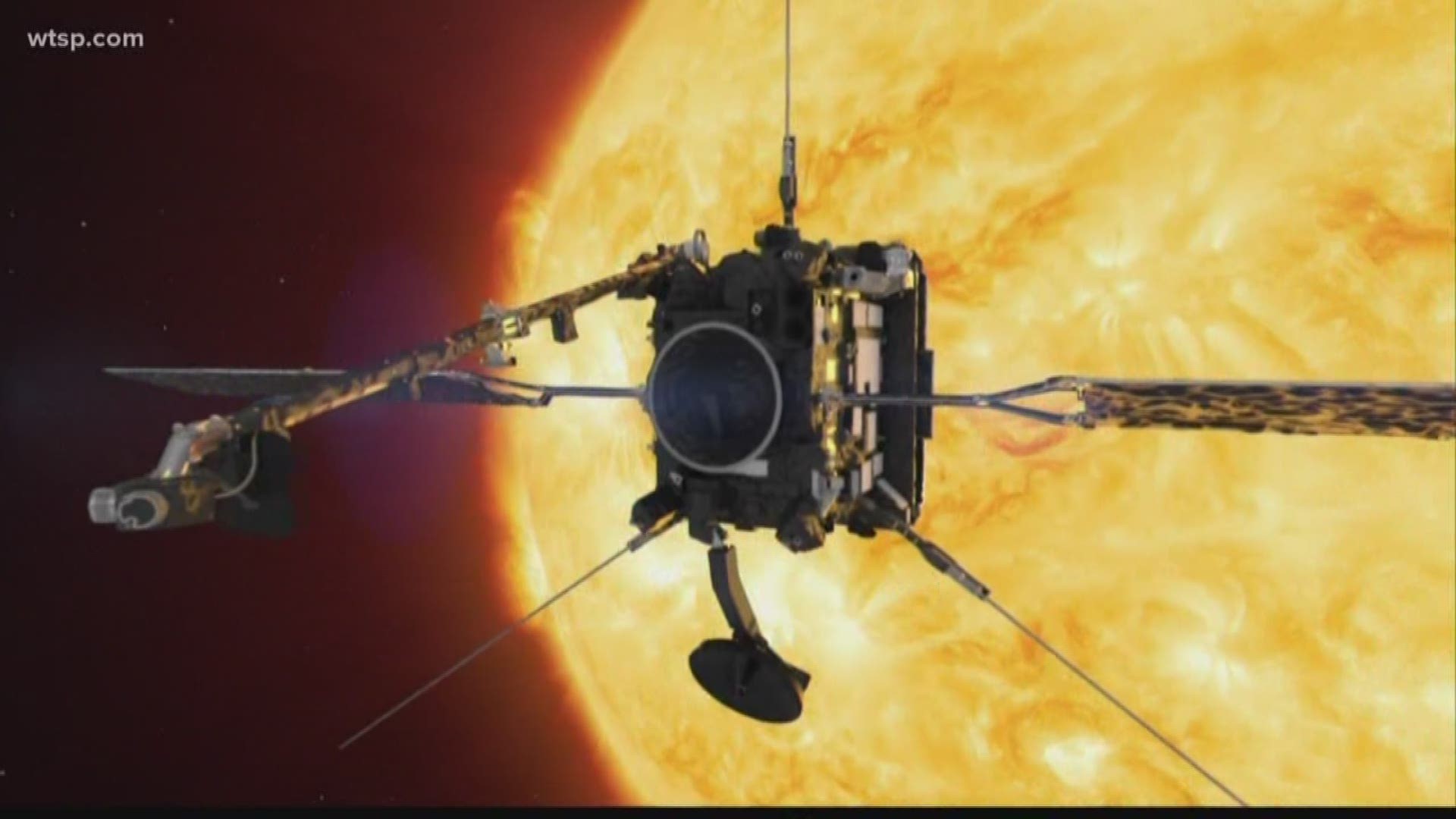CAPE CANAVERAL, Fla. — Following years of development and eventual delays, all systems were a "go" for the Solar Orbiter satellite to capture never before seen views of the sun.
It has to get to space, first: a United Launch Alliance Atlas V blasted off at 11:03 p.m. Sunday from Launch Complex 41 at Cape Canaveral Air Force Station.
Solar Orbiter will be put to the extreme during its projected seven-year mission under the European Space Agency, or ESA, with NASA support. It will take about two years after launch to enter its operational orbit around the sun to capture views and take measurements that aren't possible from the Earth's surface -- or even just beyond our atmosphere.
The Solar Orbiter is going to get up close and personal to the sun, even inside the orbit of Mercury. The ESA says this means the probe will experience sunlight at 13 times more intense than what's felt on Earth and, of course, it'll be exceptionally hot. A heat shield will be up to the task to protect its 10 key instruments to temperatures of 932 degrees.
Once in optimal orbit, Solar Orbiter is expected to take extensive imagery of the sun's atmosphere and solar disc while other instrumentation sends back data on the solar wind, magnetic fields and more.
Solar Orbiter eventually will provide images of the sun's poles, something that has never been done before, as it's not fully understood to what extent the sun's poles have on space weather and solar storms.
A combination of the data collected could be used to better predict space weather -- a necessity given the satellites and technologies relied upon each day on Earth and in our daily lives.
"It has real-world effects on our satellites, our GPS, our power grid and things like that," David McComas, an astrophysics professor at Princeton University, told NPR.
The ESA says, ultimately, there are four main areas of investigation:
- Solar wind: What drives the solar wind and the acceleration of solar wind particles?
- Polar regions: What happens in the polar regions when the solar magnetic field flips polarity?
- Magnetic field: How is magnetic field generated inside the Sun and how does it propagate through the Sun’s atmosphere and outwards into space?
- Space weather: How do sudden events like flares and coronal mass ejections impact the Solar System, and how do solar eruptions produce the energetic particles that lead to extreme space weather at Earth?
The satellite's launch was originally planned for July 2017 but had its share of delays, pushed into the following year and again into 2019.
What other people are reading right now:
- Death of doctor who warned of virus unleashes fury at Chinese officials
- Crews to assess damage left behind by storms
- 16-year-old shot, killed days after he stopped suspect from bullying another boy
- Pizza shop gets shut down for third time in 2 years
- Infant carriers sold at Target, Amazon recalled because baby could fall out
- 1-ton great white shark pings off Florida coast
- Texas restaurant opens early to give a 3-year-old cancer patient the meal of a lifetime





